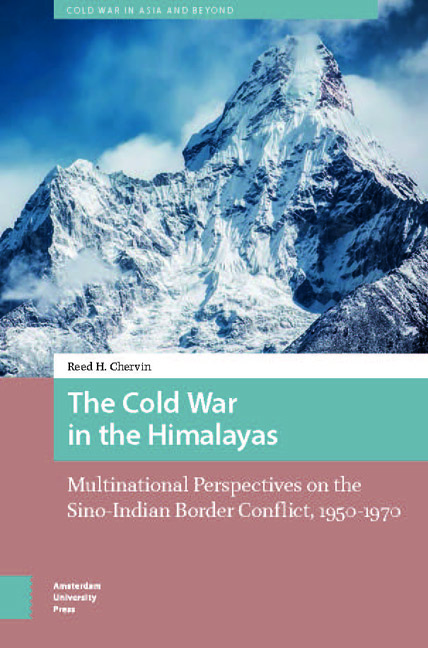 The Cold War in the Himalayas
The Cold War in the Himalayas 6 - Chinese Post-War Overtures Abroad, 1962–1970
Published online by Cambridge University Press: 16 April 2024
Summary
Abstract
Chapter 6 argues that while Beijing attempted to salvage its image after the 1962 war and fortify its southern frontier, Taipei tried but failed to make Indian re-recognition of the Republic of China a reality. Section one outlines strategies used by the People's Republic to bolster alliances. These strategies included cultural and scientific exchanges, trade agreements, and border treaties. Section two demonstrates that Beijing's backing insurgent groups such as the Nagas in India's northeast. The final section explores joint efforts by India's Taiwan lobby and the Kuomintang government to forge closer ties between the two countries. Despite the failure of these groups to achieve Indian re-recognition of the Republic of China, they succeeded in strengthening connections between India and Taiwan.
Keywords: Taipei, People's Republic, Taiwan lobby, Nagas, Kuomintang
The 1960 Sino-Soviet split and its 1962 border clash with India had left the People's Republic in international isolation. As a result, the Chinese Communist leadership attempted to remedy this situation by reaching out to countries inside and outside Asia. To contextualize Beijing's international behavior following the Sino-Indian War, we must first examine how Chinese foreign policy evolved throughout the 1960s. Historian Niu Jun argues that Chinese foreign policy took a sharp left turn in 1962 primarily due to domestic pressure resulting from the Great Leap Forward. The catastrophic effects of this event invited criticism of Mao's policies by Marshall Peng Dehuai. Placed on the defensive, Mao tightened control and rejected pragmatic foreign policy proposals by Central Committee member Wang Jiaxiang on the basis that “there was a connection between revisionism at home and abroad.” Nevertheless, Niu acknowledges that Wang's realist foreign policy did not disappear entirely. Even though China used force to respond to Indian activities at the Tibetan border, it embarked on a “peace offensive” immediately after the 1962 war, attempting to construct new alliances and bolster old ones.
What China lacked in international alliances it possessed in frontier security. The Indian army was routed during the 1962 war, and the People's Liberation Army could mobilize faster than before. Beijing felt little pressure to overhaul its frontier policy
- Type
- Chapter
- Information
- The Cold War in the HimalayasMultinational Perspectives on the Sino-Indian Border Conflict, 1950-1970, pp. 201 - 216Publisher: Amsterdam University PressPrint publication year: 2024
